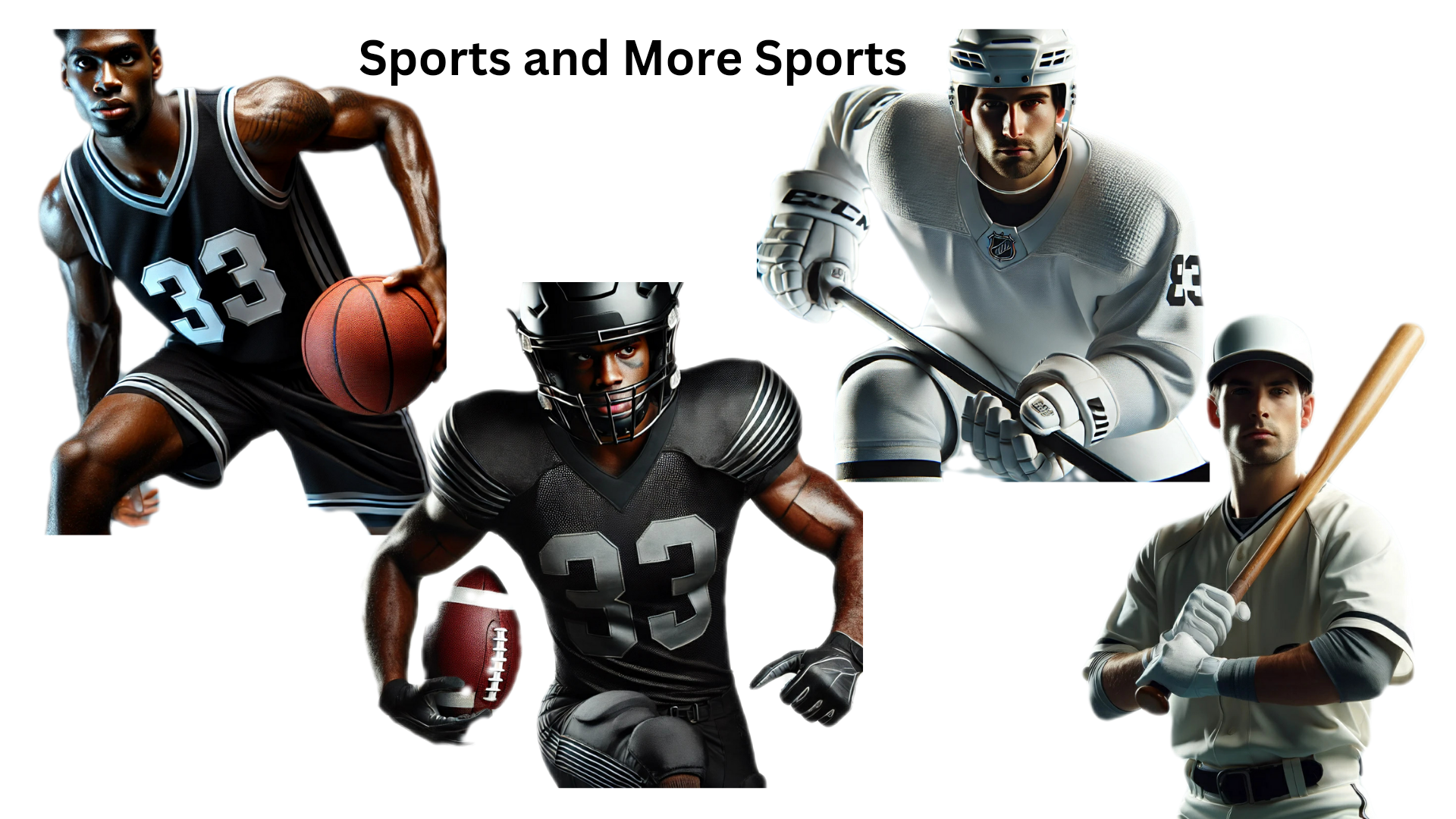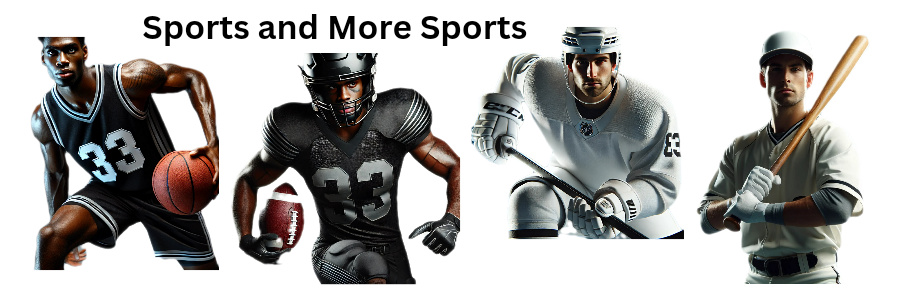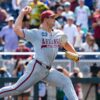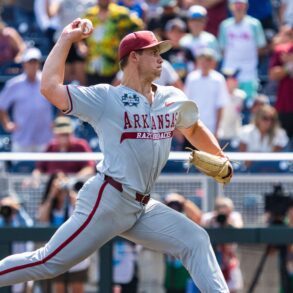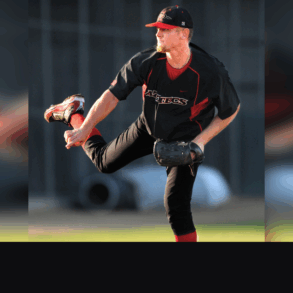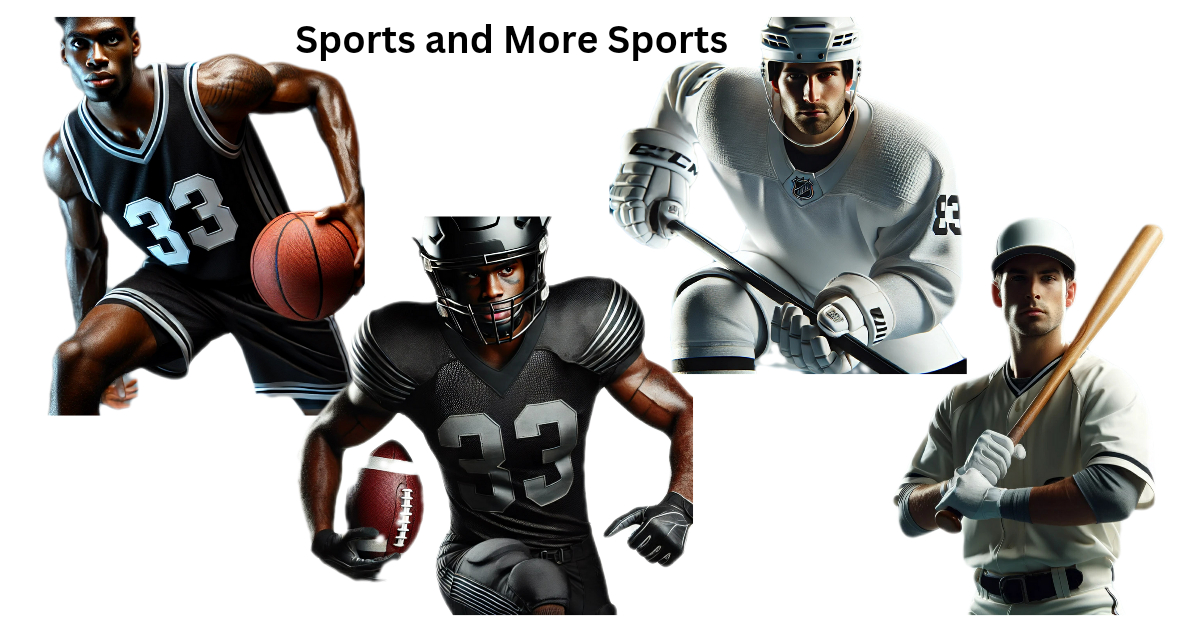Image credit:
Florida State’s Jamie Arnold (Photo by Brian Westerholt/Four Seam Images)
A year ago, I used some of the under-the-hood data we now have on college players to explore fastball quality for top college starters in the 2024 class.
It was a fun, and hopefully informative, exercise that I wanted to repeat for the 2025 class.
On our current top 100 draft list, we have TrackMan and Synergy data for 17 pitchers from the 2024 spring season. LSU righthander Chase Shores is the lone ranked player with no data, since he didn’t pitch because of an injury.
A quick note on the noise involved with college data: Many of the fastballs here have more extreme movement profiles than analysts expect to see of the same pitches once players are throwing in pro ball where tracking environments are more consistent and precise.
For example, there were 485 players in the majors in 2024 with at least 100 four-seam fastballs thrown. Of that group of players, only one had total movement (induced vertical break + horizontal break) north of 30 inches: Phillies lefthander Matt Strahm at 30.6.
In our 17-player college sample, there are five players with total fastball movement north of 30 inches. It’s certainly possible that this year’s college pitching class has an outlier bunch of lively heaters, but the much more likely scenario is that their fastball movement data—especially induced vertical break—is a bit overheated.
In looking at this pitch data, it’s probably best to use it to provide a general understanding of a fastball’s strengths and weaknesses rather than a 1:1 that you can compare directly to big league fastballs.
Our first table comes from TrackMan and includes fastball velocity (Velo), release height (RelZ), extension (Ext), vertical approach angle (VAA), induced vertical break (IVB) and horizontal break (HB). It is sorted by average fastball velocity by default.
| player | pos | school | velo | Relz | ext | vaa | ivb | hb |
|---|---|---|---|---|---|---|---|---|
| Nate Snead | RHP | Tennessee | 96.2 | 65.5 | 5.73 | -5.18 | 7.9 | 17.7 |
| Cam Leiter | RHP | Florida State | 95.7 | 69.7 | 6.68 | -5.11 | 15.2 | 8 |
| Gabe Davis | RHP | Oklahoma State | 95.3 | 76.2 | 6.7 | -5.51 | 17.3 | 8.6 |
| Tyler Bremner | RHP | UC Santa Barbara | 95.1 | 70.8 | 5.57 | -4.6 | 19.7 | 13.4 |
| Kyson Witherspoon | RHP | Oklahoma | 95.1 | 71.4 | 5.85 | -4.74 | 18.1 | 7.1 |
| James Ellwanger | RHP | Dallas Baptist | 94.5 | 75 | 6.34 | -4.88 | 16.4 | 5 |
| AJ Russell | RHP | Tennessee | 93.7 | 59.2 | 6.33 | -4.24 | 13.3 | 17.6 |
| Matt Scott | RHP | Stanford | 93.6 | 81.8 | 6 | -5.69 | 22.5 | 7.6 |
| Jamie Arnold | LHP | Florida State | 93.2 | 52.9 | 6.2 | -4.46 | 7.9 | -17.3 |
| Landon Beidelschies | LHP | Arkansas | 92.6 | 73.1 | 5.59 | -5.45 | 18.5 | -11.7 |
| Zach Root | LHP | Arkansas | 92.5 | 72.5 | 6.02 | -5.54 | 12 | -17.3 |
| Kade Anderson | LHP | LSU | 92.4 | 71.5 | 6.41 | -4.64 | 19.6 | -6.2 |
| JD Thompson | LHP | Vanderbilt | 92 | 67.4 | 6.11 | -4.69 | 18.2 | -11.7 |
| Anthony Eyanson | RHP | LSU | 91.6 | 72.3 | 5.68 | -5.64 | 16.7 | 3.8 |
| Justin Lamkin | LHP | Texas A&M | 90.8 | 70.1 | 5.68 | -5.27 | 13.9 | -18.4 |
| Cade Fisher | LHP | Auburn | 90.1 | 62.7 | 6.08 | -3.87 | 17.2 | -11.8 |
| Ryan Prager | LHP | Texas A&M | 90 | 80.8 | 5.98 | -5.63 | 22.6 | -3.4 |
Our second table comes from Synergy and includes usage rate (Use%), strike rate (Strike%), swing rate (Swing%), chase rate (Chase%) and swinging strike rate (SwgStr%). The table is sorted by swinging strike rate by default.
| player | pos | school | use% | strike% | swing% | chase% | Swgstr% |
|---|---|---|---|---|---|---|---|
| AJ Russell | RHP | Tennessee | 67% | 70.22% | 56.18% | 33.00% | 23.60% |
| JD Thompson | LHP | Vanderbilt | 59% | 71.43% | 54.25% | 37.33% | 19.71% |
| Jamie Arnold | LHP | Florida State | 67% | 68.70% | 51.07% | 38.71% | 15.73% |
| Cam Leiter | RHP | Florida State | 50% | 62.89% | 47.17% | 34.00% | 14.15% |
| James Ellwanger | RHP | Dallas Baptist | 61% | 58.65% | 43.75% | 38.46% | 13.94% |
| Ryan Prager | LHP | Texas A&M | 42% | 68.92% | 46.31% | 27.46% | 13.81% |
| Justin Lamkin | LHP | Texas A&M | 50% | 65.27% | 46.98% | 33.93% | 13.26% |
| Kyson Witherspoon | RHP | Oklahoma | 58% | 64.01% | 50.56% | 24.83% | 12.33% |
| Kade Anderson | LHP | LSU | 70% | 66.60% | 50.30% | 37.20% | 12.27% |
| Matt Scott | RHP | Stanford | 62% | 61.23% | 43.54% | 34.55% | 11.44% |
| Nate Snead | RHP | Tennessee | 62% | 66.53% | 52.20% | 29.02% | 11.16% |
| Gabe Davis | RHP | Oklahoma State | 57% | 63.18% | 46.44% | 27.03% | 10.46% |
| Tyler Bremner | RHP | UC Santa Barbara | 44% | 64.93% | 46.00% | 26.24% | 10.44% |
| Cade Fisher | LHP | Auburn | 57% | 64.32% | 39.73% | 29.06% | 8.70% |
| Landon Beidelschies | LHP | Arkansas | 56% | 64.36% | 44.26% | 28.61% | 7.05% |
| Anthony Eyanson | RHP | LSU | 38% | 66.67% | 45.92% | 30.77% | 6.18% |
| Zach Root | LHP | Arkansas | 47% | 58.62% | 38.58% | 24.02% | 6.03% |
And finally, before we dive deeper into a few specific fastballs, here are movement and velocity charts to get a better understanding of the comparative shape for both lefties and righties.
First, righthanders. Two righthanders throw primary two-seam fastballs (AJ Russell and Nate Snead), which you can find in the bottom right of this graph:
Second, lefthanders. Three lefthanders throw primary two-seam fastballs (Jamie Arnold, Zach Root and Justin Lamkin), which you can find in the bottom left of this graph:
AJ Russell, RHP, Tennessee
No pitcher misses more bats with his fastball than Russell, whose 23.6% swinging strike rate is nearly four full percentage points better than the second pitcher on the list. Russell’s 93.7 mph two-seam fastball is roughly middle of the pack, but the 6-foot-6 righty generates tons of armside movement, throws from an extremely low release point and does a nice job attacking the top of the zone, where his heater plays up and collects plenty of whiffs.
Russell’s 17.6 inches of armside movement are second-best, behind only Nate Snead among righties and third overall among total horizontal movement of all pitchers we’re talking about today. His release height is the second-lowest of the group behind Jamie Arnold. His extension is sixth in the group. His -4.24 VAA is the second-flattest behind Cade Fisher.
Russell knows he has a good fastball, and he goes to it frequently. His 67% usage rate is tied with Jamie Arnold for second, behind only Kade Anderson (70%). Despite a 12.9% walk rate in 2024, he was one of only two pitchers to top a 70% strike rate with the fastball. Russell’s fastball sample is the smallest of the group, as he threw only 14.1 innings and had Tommy John surgery in June, but it’s one of the most exciting pitches in the class.
Jamie Arnold, LHP, Florida State
Arnold is one of the top-ranked pitchers in the class, with a chance to be the first arm off the board on draft day, and his heavy-running fastball is a key piece of that. Arnold is the hardest-throwing lefty of the bunch, with a two-seam fastball that averaged 93.2 mph and has been up to 97.
In addition to his relative power on the pitch, Arnold’s two-seamer comes from an extremely short release height at 52.9 inches on average from a sidearm slot and has tons of sink and armside run. His horizontal movement is a top-five mark in this group of pitchers, and he matches righthander Nate Snead for the most sink on the pitch, as well.
Arnold’s command is among the most impressive in the class, and he pumps his fastball for strikes at a strong 68.7% clip. He boasts a strong combination of empty swings (15.73% swinging strike rate) and weak groundball contact (53% groundball rate) against his fastball. He also leads all pitchers with a 38.7% chase rate on the pitch. Arnold attacks the zone, forces hitters to swing, misses bats, creates weak ground ball contact and forces swings out of the zone.
He does it all.
Matt Scott, RHP, Stanford
Scott has better pure stuff and arm talent than his performance numbers over two years with Stanford might suggest, and because of that, he’s a favorite among scouts who think he’ll be able to take a step forward in pro ball.
From a results standpoint, Scott’s 93.6 mph four-seam fastball is unexceptional. His 11.44% swinging strike rate is middle-of-the-pack, his 61.23% strike rate is below average and hitters managed an .882 OPS against the pitch in 2024 per Synergy.
A 6-foot-7 righthander, Scott throws from an over-the-top slot and is top-two in both release height (81.8 inches) and induced vertical break (22.5 inches). Even accounting for some regression on that IVB in pro ball, Scott’s four-seam fastball shape seems to be one that could more naturally play at the top of the zone. But Scott’s fastball pitch plot suggests a pitcher who’s too frequently missing over the heart or even pitching at the bottom third—where hitters do plenty of extra-base damage:
Ryan Prager, LHP, Texas A&M
Prager returns to the draft after not signing with the Angels in the third round in 2024. He checks in at the bottom of the pack in terms of velocity with just a 90 mph four-seam fastball, but there are things to like about his heater. Prager’s placement at the top right of the lefthanded fastball chart above showcases the cut-ride nature of his heater.
He tops this group of fastballs with 22.6 inches of induced vertical break, and he also tops righthander Anthony Eyanson for the most cutting action with the pitch. Prager’s cut-ride life on the fastball has helped it play up with great command, he lands his entire arsenal for strikes at a high clip and his fastball strike rate of 68.92% is third-best of this pitching group.
It also looks like there’s lots of good deception at play with Prager. He hides the ball well throughout his delivery and throws from a higher release point that comes out from behind his head, with a crossfire landing that could amplify that deception.
Cam Leiter, RHP, Florida State
Leiter threw only 35 innings last spring for Florida State but showed huge bat-missing stuff when healthy and will be one of the more exciting arms in the class whenever he returns to the mound this spring. Leiter has a power fastball that averaged 95.7 mph and has been up to 98-99. It’s the second-hardest heater of this group (behind Nate Snead) and also has the least riding life of any four-seam variant, at just 15.2 inches of induced vertical break.
Leiter’s power is further amplified by his 6.68 feet of extension, which is good for second-most of this pitching group, behind only Gabe Davis. Leiter’s control and command need to improve, but he seemed to get plenty of empty swings even without hitting his spots last spring. His 14.15% swinging strike rate was the fourth-best mark of this group of pitchers.
Tyler Bremner, RHP, UC Santa Barbara
Analytically, Bremner’s fastball checks as many boxes as any pitcher of the names we’re looking at. Velocity? His 95.1 mph average is fourth best. Riding life? His 19.7 inches of induced vertical break is third best. Armside run? His 13.4 inches of horizontal movement is third-best among righties. Vertical approach angle? His -4.6 VAA is the fourth flattest of the entire group.
Given all of those pieces—in addition to his strong control and command—I would expect Bremner to have a swinging-strike rate better than the 10.44% mark he produces. That’s the 13th-best mark of this group of arms and only tops relative soft tossers Cade Fisher, Landon Beidelschies, Anthony Eyanson and Zach Root.
Batters didn’t hit his fastball around much—they managed just a .535 OPS against the pitch last spring, per Synergy—but it’s clear Bremner goes to his impressive changeup and slider much more frequently to miss bats. Bremner is bottom-three in fastball usage at just 44%, which I think speaks to his advanced secondaries as much as anything, but I’d assume there’s a decent bit of noise here in Bremner’s fastball shape, as well.
His 33.1 inches of total movement (IVB + HB) are the best in this group and would blow away any big leaguer from the 2024 season with a 100+ four-seam sample. The closest big league pitch comp might be Blue Jays righthander Jeff Hoffman, who averaged 17.1 inches IVB and 12.2 inches armside.
JD Thompson, LHP, Vanderbilt
Finally, we have Thompson, who has one of the sneakiest fastballs of the bunch. The 5-foot-11 lefthander is an unimposing presence on the mound and averages just 92 mph and touches 95-96, but he racks up a ton of whiffs with it. Thompson’s 19.71% swinging strike rate with his fastball is second only to AJ Russell.
Thompson has a great combination of a below-average release height (65.5 inches) and an above-average extension (6.11 feet), with solid riding life that helps his heater play up significantly. On top of that, Thompson works from the gloveside of the third base side of the rubber and does an excellent job attacking the strike zone up and to his arm side.
His 71.43% strike rate is first in the group and one of just two (along with AJ Russell) to clear 70%, though he did so with a significantly larger sample of pitches.
This post was originally published on this site be sure to check out more of their content.
